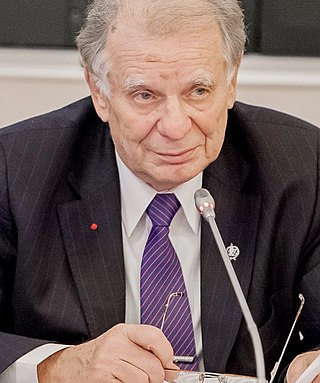
Zhores Ivanovich Alferov was a Soviet and Russian physicist and academic who contributed significantly to the creation of modern heterostructure physics and electronics. He shared the 2000 Nobel Prize in Physics for the development of the semiconductor heterojunction for optoelectronics. He also became a politician in his later life, serving in the lower house of the Russian parliament, the State Duma, as a member of the Communist Party from 1995.

Dmitri Ivanovich Mendeleev was a Russian chemist and inventor. He is best known for formulating the Periodic Law and creating a version of the periodic table of elements. He used the Periodic Law not only to correct the then-accepted properties of some known elements, such as the valence and atomic weight of uranium, but also to predict the properties of three elements that were yet to be discovered.

Aleksandr Mikhailovich Lyapunov was a Russian mathematician, mechanician and physicist. His surname is variously romanized as Ljapunov, Liapunov, Liapounoff or Ljapunow. He was the son of the astronomer Mikhail Lyapunov and the brother of the pianist and composer Sergei Lyapunov.
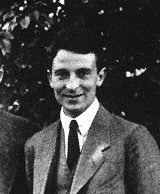
Oskar Benjamin Klein was a Swedish theoretical physicist.

The Russian Academy of Sciences consists of the national academy of Russia; a network of scientific research institutes from across the Russian Federation; and additional scientific and social units such as libraries, publishing units, and hospitals.
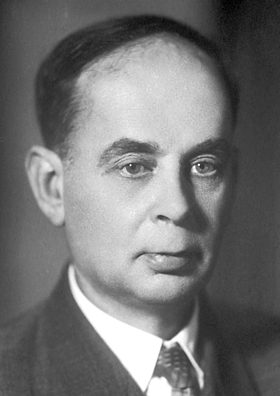
Ilya Mikhailovich Frank was a Soviet physicist who received the 1958 Nobel Prize for Physics, jointly with Pavel Alekseyevich Cherenkov and Igor Y. Tamm, also of the Soviet Union. He received the award for his work in explaining the phenomenon of Cherenkov radiation. He received the Stalin prize in 1946 and 1953 and the USSR state prize in 1971.
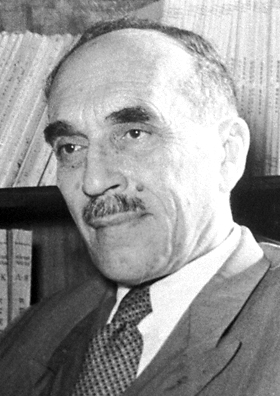
Nikolay Nikolayevich Semyonov , sometimes Semenov, Semionov or Semenoff was a Soviet physicist and chemist. Semyonov was awarded the 1956 Nobel Prize in Chemistry for his work on the mechanism of chemical transformation.
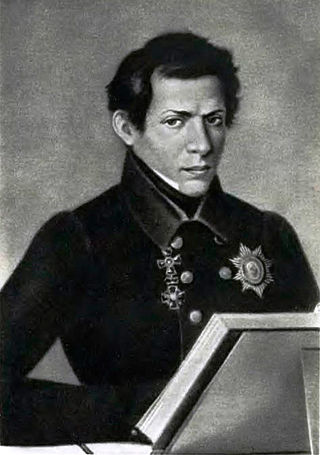
Nikolai Ivanovich Lobachevsky was a Russian mathematician and geometer, known primarily for his work on hyperbolic geometry, otherwise known as Lobachevskian geometry, and also for his fundamental study on Dirichlet integrals, known as the Lobachevsky integral formula.

Saint Petersburg State University is a public research university in Saint Petersburg, Russia. Founded in 1724 by a decree of Peter the Great, the university from the beginning has had a focus on fundamental research in science, engineering and humanities.

Alexander Stepanovich Popov was a Russian physicist who was one of the first people to invent a radio receiving device.

Alexander Alexandrovich Friedmann was a Russian and Soviet physicist and mathematician. He originated the pioneering theory that the universe is expanding, governed by a set of equations he developed known as the Friedmann equations.

Vladimir Aleksandrovich Fock was a Soviet physicist, who did foundational work on quantum mechanics and quantum electrodynamics.

Olga Aleksandrovna Ladyzhenskaya was a Russian mathematician who worked on partial differential equations, fluid dynamics, and the finite difference method for the Navier–Stokes equations. She received the Lomonosov Gold Medal in 2002. She is the author of more than two hundred scientific works, among which are six monographs.

Yegor (Egor) Ivanovich Zolotarev was a Russian mathematician.

Ludvig Dmitrievich Faddeev was a Soviet and Russian mathematical physicist. He is known for the discovery of the Faddeev equations in the theory of the quantum mechanical three-body problem and for the development of path integral methods in the quantization of non-abelian gauge field theories, including the introduction of Faddeev–Popov ghosts. He led the Leningrad School, in which he along with many of his students developed the quantum inverse scattering method for studying quantum integrable systems in one space and one time dimension. This work led to the invention of quantum groups by Drinfeld and Jimbo.

Aksel Ivanovich Berg was a Soviet scientist in radio-frequency engineering and Soviet Navy Admiral, Hero of Socialist Labour. He was a key figure in the introduction of cybernetics to the Soviet Union.

Alexey Andreevich Anselm was a Russian theoretical physicist, Doctor of Physical and Mathematical Sciences, professor, director (1992–1994) of the B.P. Konstantinov Petersburg Nuclear Physics Institute (PNPI), member of: the Russian and American Physical Society, the executive committee of the Nuclear Physics Branch of the Russian Academy of Sciences, the editorial board of the Russian journal “Yadernaya Fizika”.
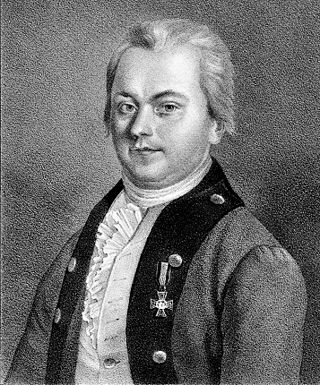
Ivan Ivanovich Lepyokhin was a Russian naturalist, zoologist, botanist and explorer.
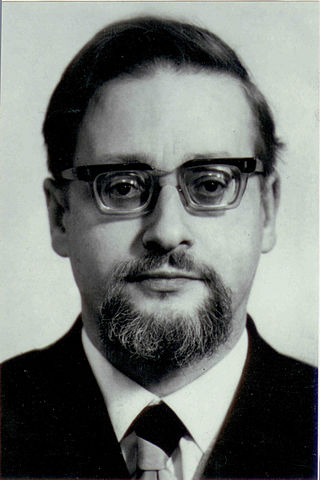
Yuri Andreevich Yappa was a Soviet and Russian theoretical physicist. He is known for publications on particle physics, quantum field theory, General Relativity, philosophy of science, and for his graduate texts on classical electrodynamics and theory of spinors.
Boris Innokentievich Zubarev was a Russian physicist. Professor, Doctor of Physical and Mathematical Sciences.



















